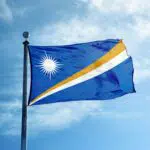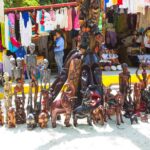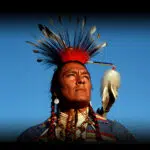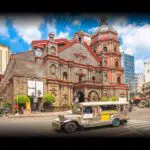During National Heritage Month, which is observed each year in May, people’s thoughts turn to Philippine culture. A Presidential Proclamation officially established the ‘Pambansang Buwan ng Pamana,’ as it is called in the native language, to spotlight and celebrate the Philippine culture and heritage with the public. The end goal shares similarities with many other famous ‘Heritage Months’ around the globe — preserving the glorious culture of the nation, raising public awareness about it, and encouraging people to embrace their Filipino identity.
History of National Heritage Month
According to geology, the Philippines have formed over 65 million years when the earth’s crust began to collapse, resulting in underwater volcanic explosions. The settlers began to arrive after that.
People from the Asian mainlands arrived first, followed by the Chinese and, finally, Muslim traders. The world had discovered the existence of this little bit of heaven by the 1500s, and colonization had begun. During this time, European settlers arrived, with Spanish Christians being the dominant power in the region, impacting the local people’s food, culture, and even customs. While the islands had previously existed as distinct nations, the entrance of a colonial force brought this nation together to form a powerful Southeast Asian archipelago. By the 19th century, colonization — and consequently the propagation of Christianity — had become widespread.
Eventually, Filipino nationalists began to advocate for their nation’s freedom. Clashes for independence began and spurred a revolution against Spanish colonial rule. At the same time, a war broke out between the U.S. and Spain, which the U.S. won.
A similar fight in another Spanish colony changed things for the Philippines. The fight for independence between Cuba and Spain saw Cuba ally with the U.S., and Spain eventually lost their hold over its colonies, namely the Philippines, Guam, and Puerto Rico.
The Philippines were a U.S. territory for around 50 years, during which the Philippines repeatedly fought for their sovereignty, even declaring war against the U.S. in 1899. By 1902, the U.S. had won the first battle, but at a great cost. Eventually, by 1935, the U.S. established a body called the ‘Commonwealth of the Philippines,’ to work towards granting this archipelago their freedom over 10 years. The Philippines was formally recognized as an independent state in 1946, after World War II.
They were finally an independent nation, but the colonial influence manifested itself strongly in this nation — today’s Filipinos are a rich blend of diverse religions and cultures, speak multiple languages with native fluency, and have adopted customs from all over the world.
National Heritage Month timeline
A Portuguese explorer discovers these islands, claims them in the name of Spain and goes on to name them 'Las Felipinas' after the then-king of Spain — King Philip II of Spain.
On January 1, a moving picture is created for the very first time by the movie-theater house “Salón de Pertierra,” making the Philippines one of Asia's earliest movie producers.
During May, the National Library of the Philippines participates in National Heritage Month celebrations, creating increased awareness of Filipino history via books and libraries.
500 years after the Philippines was first discovered by a European explorer, the National Heritage Month celebrations commemorate this event, joining hands with the UNESCO National Commission of the Philippines for a bigger impact.
National Heritage Month FAQs
What heritage month is in April?
April is when America celebrates National Arab American Heritage Month (N.A.A.H.M.), which honors the Arab American heritage and celebrates the contributions of Arab American people and Americans who speak the Arabic language.
Is June a heritage month?
June is another heritage month for the U.S. — it is National Caribbean-American Heritage Month, which celebrates the contribution of all Caribbean-Americans throughout U.S. history.
What is a National Heritage month?
A heritage month — which is celebrated in many countries across the world — celebrates and raises awareness about diverse cultures, traditions, and groups of people.
How to Observe National Heritage Month
Immerse yourself in Filipino culture
There are plenty of ways to understand Filipino culture and heritage throughout this month. You can start by trying out their cuisine, listening to music from the region, reading a book by a Filipino author, watching a Filipino movie, or taking a holiday in this country if your budget allows.
Learn about the Philippines too
Right from how these islands came to be, to how they gained their independence makes for very interesting learning. Check out different literature on the subject to help you understand this country and its culture a little better.
Show your solidarity
Embrace the people, respect their culture and heritage, and raise awareness of this month among all the Filipinos you know. You can also approach local cultural agencies and Philippine-based organizations to create various heritage-related activities this month, including workshops, talks, festivities and parties, competitions, and more.
5 Things You Need To Know About Filipino Culture
Their online game is super smooth
They are not only the 'texting capital of the world,' sending out more text messages than the U.S. and Europe combined, but “Time Magazine's” study showed they rank first in selfie-taking in the world.
They eat five meals a day
They love food so much that they have multiple meals in one day — including breakfast, a mid-morning snack, lunch, a late-afternoon snack, and dinner.
They've got colorful public transport
They’ve got the colorfully decorated 'jeepneeys' (buses) — leftovers from the Second World War — and they have tuk-tuks and tricycles, which are the main mode of transportation there.
Karaoke is super popular there
There are karaoke bars everywhere, and it's even used to promote various commercial items, like groceries in supermarkets, etc.
Move over, McD, they've got Jollibee
This fast-food chain overtook McDonald's in the popularity charts multiple times and has now even spread to other Asian countries, North America, the Middle East, and Europe.
Why National Heritage Month is Important
We're introduced to the Philippine culture
We see how a population different from us lives, acts, and enjoys. In doing so, we are also getting to explore new traditions and customs, food and drink, and heritage that broadens our horizons and experiences.
It helps us understand our heritage
It opens up a discourse about how different cultures translate and interact with our history and culture, inviting us to marvel at the similarities and celebrate the differences.
It has an overarching meaning too
The more we explore another culture through their heritage, the more we see how much we have in common with people from other parts of the world. Many heritage month events, including ours, remind us that the world is more than its differences.
National Heritage Month dates
| Year | Date | Day |
|---|---|---|
| 2026 | May 1 | Friday |
| 2027 | May 1 | Saturday |
| 2028 | May 1 | Monday |
| 2029 | May 1 | Tuesday |
| 2030 | May 1 | Wednesday |











































































































































































